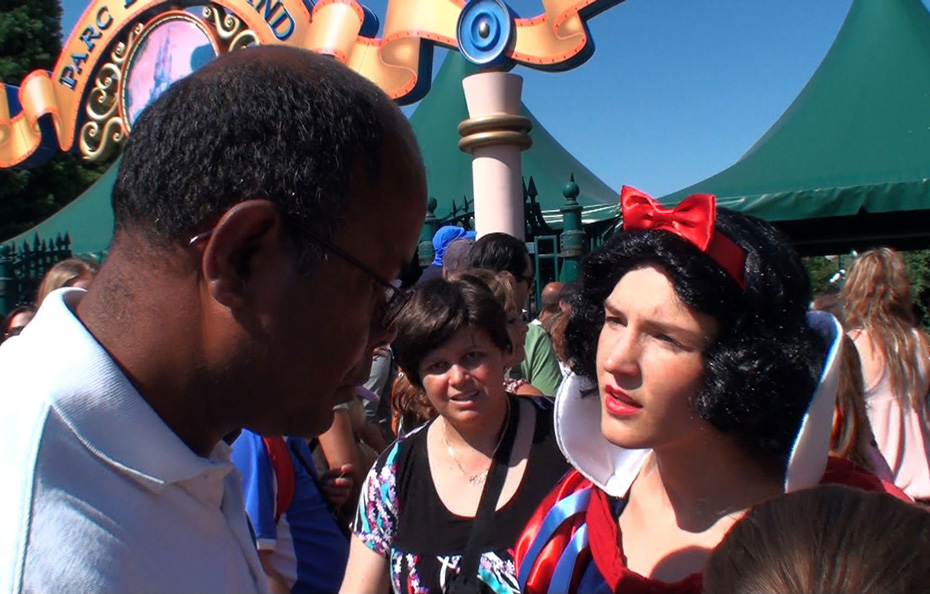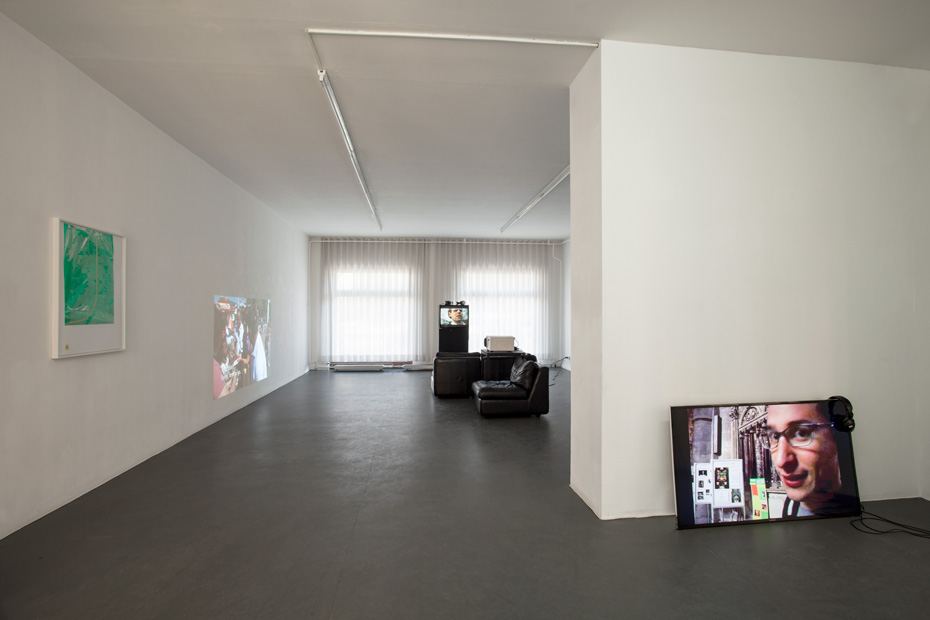William Kherbek dissects the Galerie Kamm group show, featuring Pilvi Takala, Britta Thie, Jordan Wolfson and others

The show It’s My Hair And I Can Do What I Want With It takes its title from one of the most influential extended essays of recent times, Tiqqun’s 1999 ‘Preliminary Materials for a Theory of the Young-Girl’. The text itself examines the creation of a media-generated entity called the ‘Young-Girl’, who serves as the fount and the victim of a totalised market-based social culture. Everyone should be a Young-Girl, but no one can be because ‘being’ a Young-Girl is actually only an endless series of consumption-based tasks to attempt to reach the purity of her essence. The exhibition brings together works by a diverse group of artists, some of them biologically closer than others to the archetypal ‘Young-Girl’, and investigates the evolution of the concept in the age of the Internet.
Positioned near the entrance is a performance of Young-Girldom that would make the marketeers twitch with pleasure and perhaps run for the nearest shower cubicle, Britta Thie’s ‘Shooting’, a two-channel video in which Thie gives herself commands to feed the needs of the camera, the photo-shoot, the audience, the public and dozens of other immaterial yet irreducible imperatives. Pilvi Takala also engages some real life young girls, directly appearing outside EuroDisney dressed in Snow White’s costume. There’s trouble with security because they don’t want her to be confused with “the real Snow White” on the other side of the ticketing booths. Security makes some noises about how she might be up to “something bad” and how she can’t appear in a “disguise”, but as kids and parents snap photos with the “fake Snow White”, it’s hard to imagine that brand dilution isn’t lurking on the priorities list as well.

Also youthful, if not particularly Young-Girly, is Jordan Wolfson’s 2004 video ‘The Crisis’ a hushed, vaguely absurd meditation on creating art in the face of art history set in an atmospheric Old Europe-style church, tourists milling in the background, as Wolfson speaks of his own personal artistic revelations. Demonstrating once again that there’s a before Felix Gonzalez-Torres and an after. Closest in time to the publication of the Tiqqun essay is a riveting, morally-dubious work by Renzo Martens titled ‘Episode I’ in which Martens, on a journey of self-discovery, travels to Grozny in the midst of the Russian assault on the province of Chechnya. On his mission, Martens, frequently mistaken for a journalist, gives the cameras to refugees and other victims of the war and asks them what they think of him, how they see him, how they feel about his being there. These are questions that deserve to be asked, and Martens appears to be offering a courageous indictment of Western crisis-porn, but as the questions unfold, he begins asking things like “Do you find me handsome?” and the work deliquesces from reportage to art. It’s hard to watch Martens talking to burn victims about their relative attractiveness, or turning young female refugees into Young-Girls before our eyes, asking them about love and what kind of man they want (“Mysterious? With a secret?”), but perhaps the bluff, (understandably) twitchy Australian head of the UN rescue mission is correct when he says without images, without a human story, people are content to do “zippo” about international crises. ‘Episode I’ is not only about the Young-Girls in the camps, but the Young-Girl inside Martens, troubling over his own image and how to present himself to his fiancée: it is also about the Young-Girl-ification of warfare, you can drop a bomb on an angry young man, no problem. We even permit ourselves to allow faceless women, young and old, to be “collateral damage”, but when the bombs start falling on Young-Girls we begin to find our conscience. Martens work evokes the pre-Tiqqun film ‘Miss Sarajevo’ by Bill Carter which covers similar territory, but Martens makes the complicity of the viewer, and indeed the artist, much more explicit and it is therefore much tougher going, but perhaps more necessary for it.
It’s My Hair And I Can Do What I Want With It runs until 19 April at Galerie Kamm, Rosa-Luxemburg-Strasse 45, D-10178 Berlin




